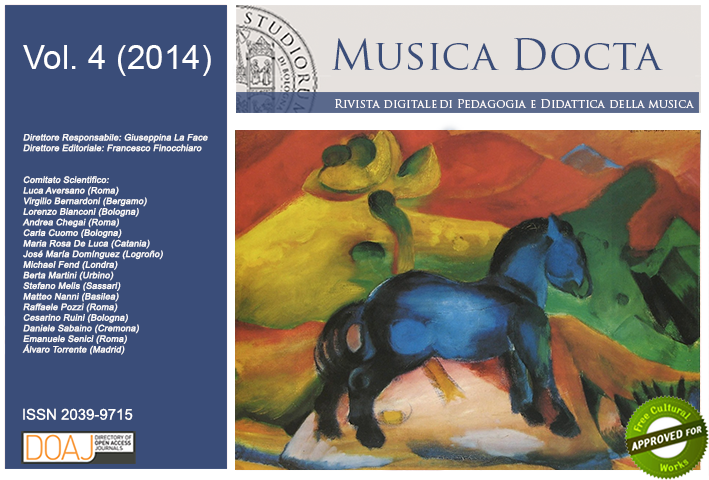Creativity and images in two Schubert Lieder: a didactic approach
DOI:
https://doi.org/10.6092/issn.2039-9715/4611Keywords:
creativity, Lied, SchubertAbstract
The purpose of this article is to compare two significantly different Lieder by Franz Schubert, both composed in 1823, and sharing a mutual theme, water. In Auf dem Wasser zu singen (D 774) the water runs: what we have is a fluid, dynamic, unstable element. In Des Baches Wiegenlied (D 795, no. 20) the water stagnates in a draining, deadly calm. Nevertheless, the sound representations of these very distant poetic images share the same formal structure: they are both strophic Lieder. The distinction lies elsewhere: in the ductus, the metric-rhythmical scheme of the verses (dactylic hendecasyllables in the former, Knittelverse in the latter), and hence of the melody. More in general, the differentiating element lies in the relationship between voice and piano, text and music.
A close examination of the two Lieder easily lends itself to an illustration of the processes that govern ‘creativity’ in a composer like Schubert, who combines an extraordinary inventiveness with a perfect mastery of form. In fact, what is referred to as ‘creativity’ can hardly be reduced to such categories as ‘inspiration’ or ‘spontaneity’ (as it is often taken to mean in music education classes), but implies a trained ability to recombine and reprocess data and techniques one has already acquired.
Downloads
Published
How to Cite
Issue
Section
License
Copyright (c) 2014 Giuseppina La Face
The copyrights of all the texts on this journal belong to the respective authors without restrictions.
This journal is licensed under a Creative Commons Attribution Share-Alike 4.0 International License (full legal code).
See also our Open Access Policy.
Metadata
All the metadata of the published material is released in the public domain and may be used by anyone free of charge. This includes references.
Metadata — including references — may be re-used in any medium without prior permission for both not-for-profit and for-profit purposes. We kindly ask users to provide a link to the original metadata record.






